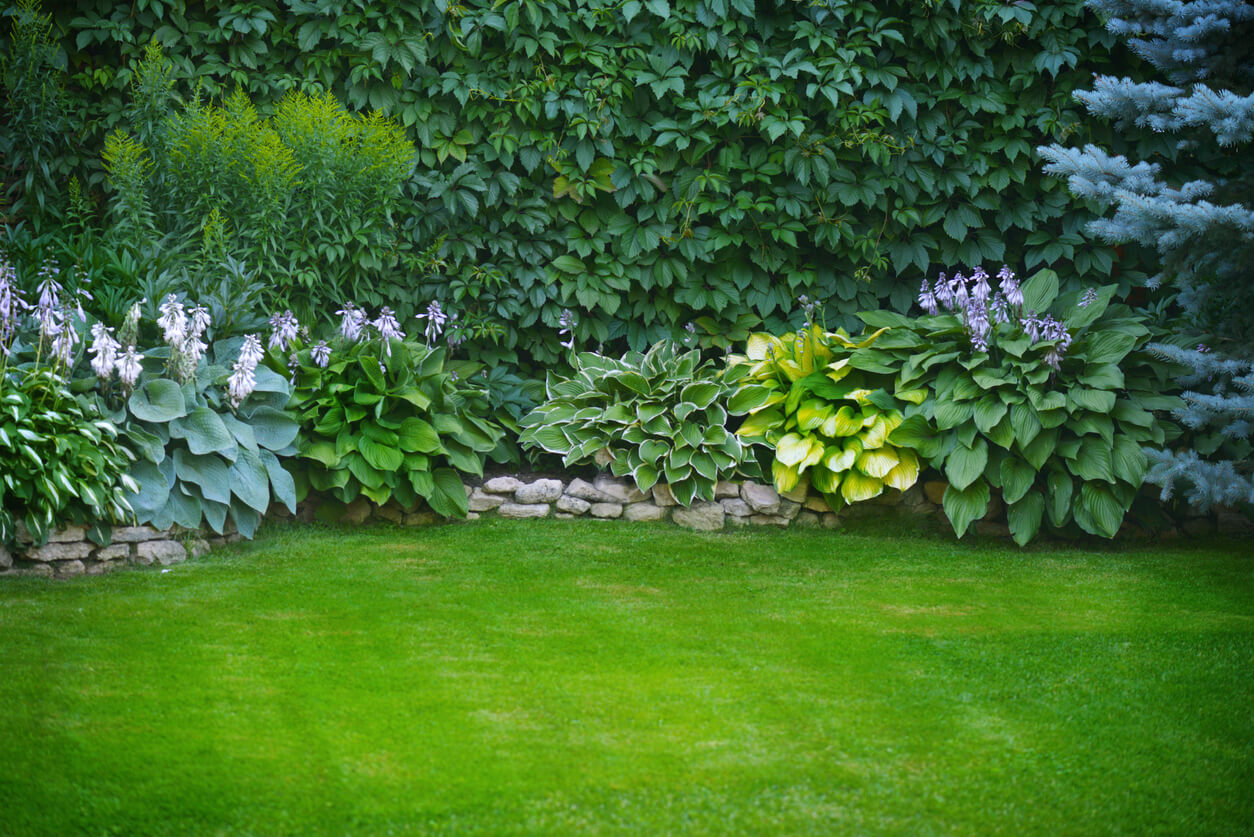Hostas are hardy perennials that are reliable and easy to grow. Learn more about growing hostas with our expert gardening tips.
Hostas are shade loving plants that provide attractive foliage from spring until frost. They are easy to grow, long-lived & require little maintenance. There is a vast array to choose from and every year they will increase in size and beauty. Hostas rarely if ever need division, and in fact, are at their best appearance when left undisturbed. Once you start exploring hostas, you’ll find they get rather addictive! From 4-inch miniature hostas to 6-foot-wide giant hostas, there’s a hosta variety to fit any situation from large borders or tiny rock gardens to container gardening.
Follow these guidelines to grow your own beautiful Hostas:
1. Placement
Hostas are shade-loving perennials that grow best in partial shade and can tolerate very shady areas with most needing protection from the hot afternoon sun. The best spot to plant Hostas is one that receives some morning sun but becomes shaded by the middle of the day before the sun gets too hot. Morning sun will help bring out leaf coloration, especially the golden yellows. Too much sun will cause the leaves to burn.
2. Planting
Hostas prefer loose well-drained soil, usually garden soil amended with compost or soil conditioners. Dig a hole large enough to accommodate the current roots and to accommodate future growth. Do not plant too deep. The roots should be covered with soil and the place on the stem where the individual leaves branch off should be above the ground. Fill to ground level with amended soil. Check planting depth after the ground has settled. Also, be aware of spacing & giving your hosta enough elbow room to grow and spread out.
3. Watering
Hostas are heavy drinkers! Their large leaves absorb water quickly & require plenty of water, especially if they are getting more sun than recommended. Use mulch to help conserve soil moisture & cool roots. Some say Hostas are drought tolerant. This is somewhat true, especially for mature plants. Technically, most hostas can survive quite well with the normal rainfall and only a little supplemental watering. However, if you want your hostas to grow well, have lush foliage, then watering is the best thing you can do. We recommend 1½ inch per week for hostas grown in part shade. Those in sunnier spots will need more water.
4. Fertilizer
The most beneficial time to apply fertilizer is in the spring through early summer when the hostas are actively growing. See our Glen Echo Nursery staff for the best types of fertilizer. Water the fertilizer in well. We also recommend that you do not fertilize in the fall.
5. Dividing
Hostas are best left alone but can be split if necessary. Splitting hostas is best done in spring or early fall. Ideally, plan on dividing hostas before spring or fall rains arrive. Hostas suffer most when they lose roots, so dig as much of the root ball as possible. If you just need a few divisions, dig small clumps that have formed beside the larger parent clump.
6. Mulch
Mulch is an excellent way to make the most of your watering and to reduce weeds. It is important not to mulch too deep. One to two inches of mulch is adequate and the mulch should be several inches away from the hosta crown and shoots. Mulching up to the stems is not good for the hostas.
7. Potting
If you plan to grow your Hostas in pots or containers, we recommend using a good high-quality nursery-type potting mix and adding a shovel full of compost to the mix.
8. Maintenance
Trim damaged leaves and faded flower stalks. The spent flowers can be cut off as far down into the foliage as you can reach immediately after they have finished blooming. In the fall, after the foliage dies back for the winter, we recommend you remove the old foliage to help prevent pests and disease. The leaves can be removed in spring, if you prefer, without damaging the Hosta, however, it may be more susceptible to pests. Hosta foliage should not be composted. If needed, begin slug and snail control as hostas emerge in the spring. Keep in mind deer, rabbits and voles love hostas as much as we do!






